Not only is recycling good for the environment, it is good for our pocketbook. Recycling is the process of turning used products into raw materials for making new products. With thousands of miles of roadway in place — many needing rehabilitation — reusing the existing pavement materials can make a big cash difference.
Full-depth reclamation (FDR) is a rehabilitation technique that has been around for several years. The process involves pulverizing the existing roadway materials, mixing it with a stabilizing agent and using it to form a foundation layer for the new roadway. FDR provides structural benefit to the new roadway, conserves raw materials and quickly returns the facility to service. However, the process can be difficult to get just right.
”The Bryan and Lubbock Districts [of the Texas Department of Transportation, or TxDOT] have been leaders in using FDR. Both have recycled many miles of roadway,” says Tom Scullion, manager of the Texas Transportation Institute’s (TTI’s) Flexible Pavements Program. “More of the districts are getting involved, and it’s really accelerating, but some districts have little experience with FDR. TxDOT wanted a comprehensive study and guidelines on how to test, design and construct FDR projects.
‘The first task in using FDR is conducting nondestructive tests on the FDR candidates. Usually this process is accomplished by using ground-penetrating radar and falling weight deflectometers. These tests measure uniformity and overall existing strengths. Next, designers take samples of the existing materials and test them in order to select the optimal type and amount of stabilizer to use. This includes both strength and moisture susceptibility testing. Then, during the construction phase, everything needs to be done correctly — using the right amount of stabilizer, mixing it correctly, spreading the mixture uniformly and verifying that the result meets the design.
“When people run into problems with FDR, it’s usually because the existing roadways are so variable,” Scullion says. “You’re trying to make this into a uniform support structure, so upfront testing and performance-related design tests are critical.
“The Bryan District, for example, has been designing pavements using FDR since the 1990s and has done over 1,000 miles of roadway.
“It’s a good process that allows us to construct economically,” says Darlene Goehl, the project director and the pavement and materials engineer in the TxDOT Bryan District. “We test the existing roadway to determine how good the material is. We’ll probably recycle it no matter its condition, but the tests tell us how to design the total pavement structure and where we include that existing material.
“Another issue researchers are examining is the different stabilizers that are available. Most districts use lime or cement, but some districts want to use fly ash, asphalt emulsions and other materials.
Environmental concerns also play a part in the design process. Engineers attempt to minimize the amount of dust blowing around during construction. Slurry (materials mixed with water) is now used, and researchers are working with manufacturers of slurry equipment to determine the best way to apply the materials.
“The final part of the study is following up and getting feedback,” says Scullion. “We’re going to test projects that were done recently to determine their strengths and weaknesses, and then see how we can improve the whole design process.”
The study will produce guidelines, training sessions and demonstration projects. Researchers will work closely with TxDOT districts on FDR, offering input and getting feedback in return.
As the United States works to improve its infrastructure, initiatives like FDR will prove critical. Not only is it a “green” process that benefits the environment, it is also an efficient, cost-effective re-use of roadway materials.
“‘Doing more with less’ could be this technique’s slogan,” says Scullion. “As we refine FDR with feedback from practitioners, we should end up with a rehabilitation technique that can benefit Texas and the nation for years to come.”
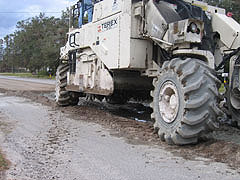
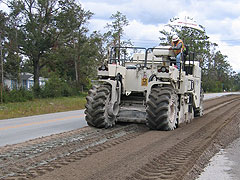

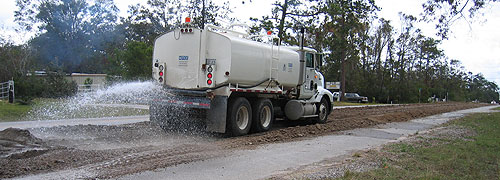
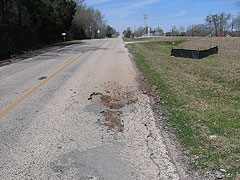
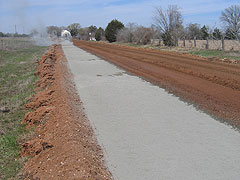
Full-depth reclamation (FDR) allows departments of transportation to recycle old roads with potholes into new, smooth roadways.
